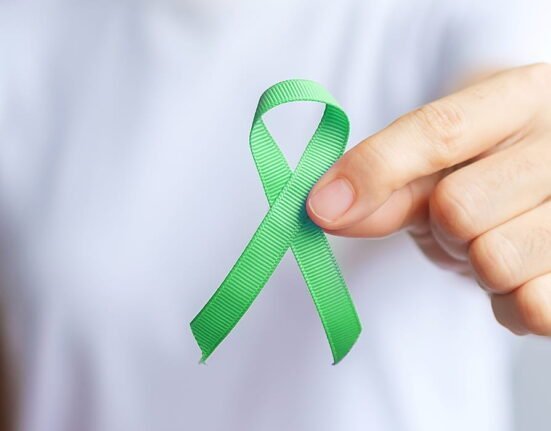There are so many things that has changed since Pandemic hit us. One such revolution is online therapy for mental health. Online therapy is gaining global popularity as a viable and increasingly accessible method of mental health support, particularly since the Covid-19 pandemic. The Covid-19 pandemic emphasised the need for remote mental health services. Text therapy/Online Therapy played a significant role in bridging the gap in care during periods of social distancing. Experts say the global online therapy services market will soar from $9.57 billion in 2023 to $31.03 billion in 2028. Let’s see in what areas people opt for text therapy weighing over Traditional therapy.
Understanding Text Therapy:
Text therapy utilizes text messages or chat platforms for mental health counseling, offering a convenient and accessible alternative to traditional in-person or video sessions. It often involves asynchronous communication, where users exchange messages without requiring real-time interaction.
Steps on how does it work:
- Sign in with the online therapy platform.
- You need to answer questions about your mental health history, current concerns, and therapeutic goals.
- Based on your responses, the platform matches you with a suitable licensed therapist
- The typical method is asynchronous, which means you send a message, and the therapist responds at a later time, instead of real time meeting.
- In text therapy, individuals articulate their thoughts, emotions, and experiences through written messages, while the therapist offers support, guidance, and feedback through their responses.
Read More: What to talk about in therapy?
Advantages of Text Therapy:
The effectiveness of therapy delivered via text compared to voice, video, or in-person formats can vary based on several factors, including the nature of the issues being addressed, the therapeutic approach, and individual preferences.
Accessibility:
Text therapy can be more accessible for those who have difficulties with in-person visits or prefer written communication. Text therapy provides accessibility to individuals who are disabled or housebound. Mobility can be a big issue when it comes to accessing mental health care. According to a 2020 study by the National Library of Medicine, text therapy has displayed improved treatment outcomes for those with anxiety and depression.
Convenience:
Text based therapy offers access to mental health treatment to people in rural or remote areas who might not have access to any other form of mental health treatment because there are few or no mental health practices in their area. You can be connected with a therapist in as little time and also, clients can take their time to reflect on their responses, which may lead to deeper insights. There is so much for the clients to open up about their problems conveniently without compromising their time to go to the therapist.
Affordability:
Therapists who only treat patients online likely have fewer overhead costs, such as renting an office etc. It is also affordable for clients to cut out the unnecessary expenses which will be spent for going to the therapist.
Comfort and Anonymity:
In therapy, the client and therapist build a relationship, and the therapist may offer extended sessions or adjust the terms of their support. Some individuals find it easier to express themselves through writing, as it reduces the anxiety that can come with speaking in real-time. The anonymity of text therapy can help ease discomfort and the potential embarrassment of sharing sensitive thoughts and behaviors.
Communicating through a chat window can feel less intimidating than speaking aloud, and the act of writing itself often provides emotional relief. Additionally, online therapy helps reduce the stigma traditionally associated with mental health care, as clients don’t need to worry about being seen at a therapist’s office or explaining why they’re taking time out of their day for therapy.
Read More: Unconditional Positive Regard in Therapy
Challenges and limitations:
Lack of Non-Verbal cues:
If using text-based therapy, your therapists cannot see facial expressions, vocal signals, or body language. These signals can often be quite telling and give the therapist a clearer picture of your feelings, thoughts, moods, and behaviors. Text communication lacks tone, facial expressions, and body language, which can be crucial for understanding emotions and context. In a text format, therapists may not be able to respond immediately to emotional cues or crises. Misunderstanding of the written response which in turn impacts the therapy.
It Poses some serious questions such as
- Does the person possess the written language skills to express their emotion?
- Cant be able to express empathy through texting.
Risk of Miscommunication:
Fumbling with attempts at close observation of non-verbal cues, and even interpreting vocal ones, given the severely compromised dynamic range. Therapist cannot pretend that the exchange of emails and texts captures even remotely the full range of what goes on in person, or should. Written communication can be misinterpreted, leading to misunderstandings. Texting isn’t a good way to convey the complex feelings that arise during Therapy. Even with good-quality video calls, you lose so much information.
Ethical concerns:
Maintaining Privacy is a significant concern in psychotherapy, and online therapy introduces additional complexities. The potential for inappropriate relationships through social media raises ethical questions about the client-therapist dynamic. As information is transmitted through online platforms, the risk of privacy breaches and data hacks becomes a more pressing issue. While text therapy removes geographic limitations, it also complicates the enforcement of legal and ethical standards, as different states may have varying licensing requirements and treatment guidelines. Therefore, it’s crucial to verify your therapist’s qualifications and experience before beginning treatment.
Studies on Digital Therapy vs Traditional Therapy outcomes:
The 2022 World Mental Health Report by WHO highlights the important role of digital technologies in achieving universal, patient-focused mental health coverage. These technologies allow patients to access asynchronous telehealth, which allows communication between clinicians and patients without the need for real-time interaction. This differs from synchronous telehealth, which requires coordination of patient and clinician schedules, ready availability of technology, and adequate staff for support.
Advantages of asynchronous telehealth include better access to specialty care, improved efficiency for the patient and provider, and reduced cost of care. A questionnaire-based study was conducted that included 203 participants between the ages of 17 and 37. Results showed that while usage rates of nontraditional mental health services were considerably high, the highest rates were reported for traditional services. Similarly, participants reported high levels of willingness to use non-traditional services, yet the highest levels of willingness were reported for traditional services. These findings suggest that the integration of non-traditional services with traditional services may be particularly impactful for young people.
Situations where text therapy where not be effective
- People’s computer skills, Knowledge and internet access affect the therapy.
- It is impossible to give the crisis intervention directly.
- If someone has a serious addiction or has more severe or complex symptoms of a mental health condition, such as psychosis, text therapy may not be recommended because of the complexity of the issue unless other in-person therapies or treatments are also involved in your plan.
Conclusion
Text therapy can be effective but there’s a huge loss in both directions when you can’t see the other person and with no clarity, especially until we learn a new skill set for therapy by electronic media. Some may find text-based therapy is sufficient, while others may benefit more from voice or video interactions. It’s essential for individuals to choose the format that feels most comfortable and effective for them. But we live in a different age. And we cannot let the great be the enemy of the good.
Therapy was already headed in the direction of telemedicine: the current situation has only hastened the trend but the experience isn’t quite that seamless. Even though it has many pros,the cons of text therapy outweigh the cons especially when dealing with mental health.We’ve broken that ice, and realized it’s more convenient, enough clients seem OK with it, and it increases our reach.
References +
- Hoermann, S., McCabe, K. L., Milne, D. N., & Calvo, R. A. (2017). Application of Synchronous Text-Based Dialogue Systems in Mental Health Interventions: Systematic review. Journal of Medical Internet Research, 19(8), e267. https://doi.org/10.2196/jmir.7023
- Palus, S. (2024, October 21). What is text therapy, and does it work? Wirecutter: Reviews for the Real World. https://www.nytimes.com/wirecutter/blog/text-therapy/
- MSEd, K. C. (2024, December 11). The pros and cons of online therapy. Verywell Mind. https://www.verywellmind.com/advantages-and-disadvantages-of-online-therapy-2795225
- Lagera, P. G. D., Chan, S. R., & Yellowlees, P. M. (2023). Asynchronous technologies in mental health care and education. Current Treatment Options in Psychiatry, 10(2), 59–71. https://doi.org/10.1007/s40501-023-00286-6













Leave feedback about this